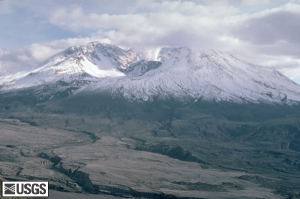The Discipline of GeographyPrinciples of GeographyGeography is the study of the distributions and interrelationships of earth phenomena. Geography is different from other disciplines in that it doesn't have a particular "thing" it studies. Botanists study plants, while geologists are interested in features of earth like mountains, river, and rock structures. Geography is defined by its approach or methodology. Geographers describe their discipline as a spatial science. By "space" we aren't talking about celestial space. Geographers are concerned with answering questions about how and why phenomena vary across the surface of the Earth. For instance, geographers investigate patterns of vegetation as they relate to distributions of climate, soils, and topography. Geographers recognize the dynamic nature of Earth's physical systems. The physical geography of Earth changes in response to variations in weather and climate, the shifting of continents, and and the sculpting of coastlines by wave action. By recognizing the Earth system is dynamic, geographers take time into consideration when looking at the spatial patterns of Earth phenomena. Therefore, geographers are playing important roles in understanding the effects of climate change on earth systems. The role of geographers in assessing patterns of environmental change is a theme that reoccurs throughout this book.
Geographers study both the form and processes acting at the surface of the earth, the principal domain of geographic study. Examine the landscape of the Appalachian mountain range in North America in the satellite image illustrated in Figure 1.1 and compare them to Mt.
Saint. Helens found in the Cascade Mountain Range. The Appalachian mountains appear as a series of linear
folds in the earth surface. The Cascades on the other hand are much taller than the Appalachians and contain many
peaks that are conical in shape, as exemplified by Mt. Saint Helens. If both are mountain systems, why do
they differ so greatly in form? Their difference arise from the processes
that created them. The Appalachian Mountains were created by folding of the earth's
crust. The conical shaped peaks of the Cascades are volcanoes. Many of these form where crustal plates collide, causing rock to melt deep beneath the earth, and finally erupting onto the surface to build the mountains we see today. Figure 1.2 Mt. Saint. Helens, Cascade Mountain Range, USA (Source: USGS) Think about what information was required to answer the question as to why these two mountain systems are so different. To understand their form we needed to investigate their geologic history to determine the processes that created them. Geographers must rely on information provided by other sciences to help understand the form and distribution of Earth phenomena. This is why geography has been called an "integrative science". It draws on the knowledge of many disciplines to understand the natural patterns within the earth system. Geographers also study how human activities shape, and are shaped by, the natural environment. Geographers are actively engaged in research about the relationship between agriculture practices, water erosion, and flooding. Others are uncovering the impact of air pollution on ecosystems, and how global warming will affect the physical geography of earth. These studies are a part of the "human-environment" tradition in geography, which was the precursor to modern environmental studies. Video: Watch Geographer Joseph Kerski explain "Why Geography Education Matters" |

